An Overview of Linear Integrated Circuits

Basics: Linear Integrated Circuit
Table of Contents
I. Development of Linear Integrated Circuits
The journey of linear integrated circuits began in the early 1960s with the first integrated amplifiers built on semiconductor silicon wafers. While the concept of integrating all devices on a single chip promised consistent characteristics and high parameter accuracy, the diversity of components in linear circuits posed significant integration challenges, initially slowing their development.
A pivotal moment came in 1964 with the creation of the Fairchild μA702, the first commercially successful monolithic operational amplifier (op-amp), designed by Bob Widlar and Dave Talbert [1]. This breakthrough was enabled by earlier innovations, such as the lateral PNP transistor structure, for which H.C. Lin filed a patent in 1963 [2]. This technique allowed for the fabrication of both PNP and NPN transistors on the same chip, paving the way for more complex and functional bipolar complementary circuits.

NPN and PNP Transistor Structure
The subsequent release of the μA709 in 1965 and the internally compensated μA741 in 1968 cemented the mass market for analog ICs, with the μA741 becoming one of the most popular op-amps in history.
In the late 1960s, various linear circuits began to be widely used. Then in the 1970s, high-precision digital-to-analog converters (DAC) and analog-to-digital converters (ADC) became the key devices for the application of digital technology and microprocessors in information processing and process control.
A new development in linear circuits was the use of MOS technology in the manufacture of voice frequency filters. Its principle is to use switches to alternately connect capacitors to different voltage nodes in the circuit to transfer charges, thereby generating equivalent resistance. Besides, due to the application of analog sampling techniques, MOS technology could be used to produce high-stability operational amplifiers and high-precision DACs and ADCs. The combination of these two technologies opened up broad prospects for the large-scale integration of analog information processing and communication equipment subsystems.
II. Production Process and High-frequency Technology
1. Production Process
Most linear integrated systems are manufactured through standard bipolar processes. In order to obtain high-performance circuits, some modifications are added to produce components with different performances on the same chip.
Bipolar Field-effect Compatible Technology
This is the technology for manufacturing high-performance junction field-effect transistors on bipolar chips. After the NPN transistor is formed on the chip, the ion implantation technique is used twice to form a low-concentration P-type channel and a high-concentration N+ type gate region. The gate-drain breakdown voltage can reach 50 to 60 volts, and the pinch-off voltage can be controlled at about 1 volt.

Ion Implantation Process
Supergain Transistor
It is the NPN transistor with the current gain of the common emitter up to 1000-5000. The base region is made through ion implantation. The doping density of the base region is an order of magnitude lower than that of the usual NPN transistor, and the thickness of the base region is also thinner than that of the usual NPN transistor.
Subsurface Breakdown Diode
The usual breakdown diode uses the emitter-base junction of NPN transistor, and its breakdown phenomenon occurs on the junction surface. While for the subsurface breakdown diode, a high-concentration P+ type layer is formed with ion implantation under the N+ type emitter region, and an N+-P+ junction is formed below the surface. The breakdown voltage of this transistor is lower than that of the surface junction, and the breakdown process is not affected by the surface condition. Besides, it has low noise and long-term stability.
2. High-Frequency Technology
The characteristic frequency of NPN transistors manufactured with the standard bipolar process is generally lower than 1000 MHz. When high-frequency and high-speed performance are required, we often use micro-machining, thin-layer epitaxy, and shallow junction techniques, which could make characteristic frequency reach 3000-5000 MHz.
High Voltage Withstand Technology
The voltage resistance value of the linear bipolar process can usually achieve 50 to 60 volts. If we want to obtain a voltage resistance value of nearly 100 volts or higher, we can take the following measures:
① Increase the thickness of the N-type epitaxial layer to increase the breakdown voltage of the NPN transistor;
② When the metal interconnects with negative potential cross the lateral PNP transistor, the thickness of the oxide layer is increased to prevent parasitic MOS transistor effect.
③ Use the field electrode to protect the surface of the isolation junction, preventing the electric field from being too concentrated, or the breakdown voltage will be reduced.
Linear CMOS Technology
This is a complex and versatile compatible linear technology that can simultaneously produce bipolar devices and CMOS devices. With this linear technology, high-performance linear systems and high-density, high-speed logic circuits can be combined on one chip. It uses refractory metal—molybdenum—as the gate material, and the P-channel and N-channel MOSFET can be made on the N-type epitaxial layer of the linear bipolar chip with photoetching for only 10 times. Besides, it has two layers of interconnects of aluminum and molybdenum, and the P-channel and N-channel devices can be used in one N-region.

CMOS Transistor Structure
Precision Components
In order to improve the accuracy of linear integrated circuits, precision resistors and precision capacitors are often used. The precision resistor is made of chromium-silicon alloy film, and its temperature coefficient can be as low as 50×10⁻⁶/°C. The precision capacitor is a sandwich structure composed of polysilicon-silicon dioxide-polysilicon, and its temperature coefficient can be as low as 20×10⁻⁶/°C.
III. Types of Linear Integrated Circuits
Linear integrated circuits can be divided into two categories: general-purpose and special-purpose.
General-purpose linear integrated circuits refer to those linear integrated circuits that can be used in a variety of electronic equipment and systems. They mainly include integrated operational amplifiers, analog multipliers, phase-locked loops (PLL), integrated voltage regulators, and various comparators.
Special-purpose linear integrated circuits refer to those linear integrated circuits that are specifically designed for certain types of electronic equipment and systems. They mainly include various amplifier circuits for radio and television, various control circuits for instruments and meters, various interface circuits for telecommunications equipment, and various driving circuits for household appliances.
IV. Basic Forms of Linear Integrated Circuits
1. Differential Amplifier Circuit
The differential amplifier is the most basic unit circuit in linear integrated circuits. It has two input terminals and can amplify the difference between two input signals. The differential amplifier has the advantages of high gain, high input impedance, low output impedance, and strong ability to suppress common-mode signals. Therefore, it is widely used in various linear integrated circuits.

Differential Amplifier Circuit
2. Analog Multiplier Circuit
The analog multiplier is a circuit that can perform multiplication operations on two analog signals. It is widely used in various electronic equipment, such as automatic gain control circuits, frequency modulation and demodulation circuits, and phase detection circuits. The analog multiplier can be realized by various methods, such as the variable transconductance method, the pulse width modulation method, and the logarithmic antilogarithmic method.
3. Energy Gap Voltage Reference Circuit
The energy gap voltage reference circuit is a circuit that can provide a stable reference voltage. It utilizes the energy gap voltage of semiconductor materials, which has a very small temperature coefficient. The energy gap voltage reference circuit is widely used in various precision electronic equipment, such as analog-to-digital converters, digital-to-analog converters, and voltage regulators.
V. Examples of Linear Integrated Circuit
1. LM386 Bipolar Linear Integrated Circuit
The LM386 is a low-voltage audio power amplifier designed for use in low voltage consumer applications. It can deliver up to 1 watt of output power into an 8Ω load with a supply voltage of 12V. The LM386 is designed to operate with a minimum of external components, making it ideal for portable audio devices and battery-powered applications. Its low quiescent current drain (typically 4mA) makes it particularly suitable for battery-powered equipment.

LM386 Application Circuit
Despite being introduced decades ago, the LM386 remains in production and continues to be widely used in hobbyist projects, portable audio amplifiers, and educational electronics [6]. Its simplicity, low cost, and reliability have made it a timeless component in the analog IC landscape.
2. MC34063 Bipolar Linear Integrated Circuit
The MC34063 is a versatile DC-DC converter that can be configured for step-up (boost), step-down (buck), or inverting applications. It contains all the active functions required to build a switching regulator, including an internal oscillator, driver, and high-current output switch. The MC34063 can operate with input voltages from 3V to 40V and can provide output currents up to 1.5A.
Like the LM386, the MC34063 has proven its worth over time and remains a popular choice for power supply designs in consumer and industrial applications [7]. Its flexibility, low cost, and minimal external component count make it an enduring favorite among circuit designers.
VI. The Modern Landscape of Linear ICs (2020-2025 and Beyond)
Since 2020, the field of linear integrated circuits has continued to evolve, driven by the demands of next-generation technologies. The global analog IC market is projected to grow significantly, with estimates predicting it will exceed $120 billion by 2032 [3]. This growth is fueled by several key trends:
1. Advanced Process Technologies
Modern fabrication has moved beyond traditional bipolar and CMOS processes. SiGe BiCMOS technology, for instance, integrates high-performance Silicon-Germanium (SiGe) bipolar transistors with standard CMOS, enabling high-frequency, low-power analog and RF circuits essential for 5G and AI applications [4]. Furthermore, FinFET technology, originally developed for digital logic, is now being adapted for analog design, offering benefits in speed and power efficiency even at advanced nodes like 14nm and beyond [5].
2. Key Applications Driving Demand
The insatiable demand for data and connectivity has placed analog ICs at the center of innovation:
5G and Wireless Communications: The rollout of 5G networks requires sophisticated RF front-ends, power amplifiers, and data converters that can handle high frequencies and wide bandwidths.
Internet of Things (IoT): IoT devices rely on a host of analog functions, including power management ICs (PMICs) for battery life, sensors for data acquisition, and wireless transceivers for communication.
Automotive: Modern vehicles are packed with analog technology, from RADAR and LiDAR sensors for autonomous driving to battery management systems (BMS) in electric vehicles (EVs).
3. Enduring Legacy: The LM386 and MC34063 in the Modern Era
Despite the rapid pace of innovation, some classic linear ICs remain remarkably relevant. The LM386 audio amplifier, known for its simplicity and low power consumption, continues to be a favorite among hobbyists and is still used in portable audio applications. Similarly, the MC34063 DC-DC converter, a versatile and cost-effective solution for voltage regulation, is still designed into countless power supplies for consumer and industrial products. Their endurance is a testament to the robust and timeless nature of good analog design.
Update Information (October 2025):
This article was originally published in 2020 and has been updated to reflect technological advancements, correct historical details, and provide a current perspective on the state of linear integrated circuits. Key updates include more precise historical milestones from the 1960s, the introduction of modern process technologies like SiGe BiCMOS and FinFET, and an analysis of current market trends driven by 5G, IoT, and automotive applications.
References
Computer History Museum. (n.d.). 1964: The First Widely-Used Analog Integrated Circuit is Introduced. Retrieved from https://www.computerhistory.org/siliconengine/the-first-widely-used-analog-integrated-circuit-is-introduced/
Lin, H. C. (1965). U.S. Patent No. 3,197,710. Washington, DC: U.S. Patent and Trademark Office.
Fortune Business Insights. (2024). Analog Integrated Circuit Market Size, Share & Growth [2032]. Retrieved from https://www.fortunebusinessinsights.com/analog-integrated-circuit-market-113494
Design-Reuse. (2025). ST silicon photonics and BiCMOS technologies. Retrieved from https://www.design-reuse.com/article/61624-st-silicon-photonics-and-bicmos-technologies-the-winning-portfolio-for-ai-optical-interconnects-/
Singh, J., et al. (2017). 14-nm FinFET Technology for Analog and RF Applications. IEEE. Retrieved from https://ieeexplore.ieee.org/document/8168836/
Texas Instruments. (n.d.). LM386 Low Voltage Audio Power Amplifier. Retrieved from https://www.ti.com/lit/ds/symlink/lm386.pdf
onsemi. (n.d.). MC34063A, MC33063A, SC33063A, NCV33063A Datasheet. Retrieved from https://www.onsemi.com/download/data-sheet/pdf/mc34063a-d.pdf
1.What are the types of linear integrated circuits?
Integrated circuits are of two types − Analog Integrated Circuits and Digital Integrated Circuits.
2.What is linear in linear integrated circuits?
A linear integrated circuit (linear IC) is a solid-state analog device characterized by a theoretically infinite number of possible operating states. It operates over a continuous range of input levels. In contrast, a digital IC has a finite number of discrete input and output states.
3.What is the difference between linear and digital IC?
Linear ICs (Linear Integrated Circuits) are called analog IC. Digital ICs (Digital Integrated Circuits) is also called as non-linear IC. Digitals ICs contain circuits whose inputs and outputs voltage are limited to two possible levels low or high.
4.What are the applications of linear integrated circuits?
The application of Linear Integrated Circuits is basically in the functions of amplification, oscillation, mixing, and modulation. The amplifiers within the headphones are linear ICs. The oscilloscopes which consist of Analog-to-digital converters are also linear ICs.
5.What is the most commonly used type of linear IC?
Linear ICs or analog ICs are most commonly used as audio frequency amplifiers and radio frequency amplifiers. Op-amps, voltage regulators, comparators, and timers are also well-known examples of linear ICs or analog ICs.
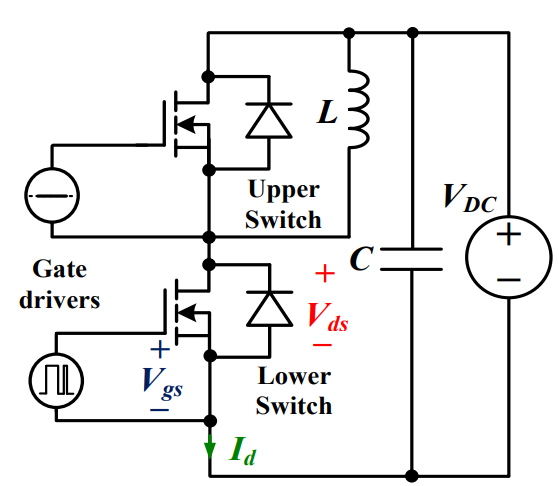 Discovering New and Advanced Methodology for Determining the Dynamic Characterization of Wide Bandgap DevicesSaumitra Jagdale15 March 20242277
Discovering New and Advanced Methodology for Determining the Dynamic Characterization of Wide Bandgap DevicesSaumitra Jagdale15 March 20242277For a long era, silicon has stood out as the primary material for fabricating electronic devices due to its affordability, moderate efficiency, and performance capabilities. Despite its widespread use, silicon faces several limitations that render it unsuitable for applications involving high power and elevated temperatures. As technological advancements continue and the industry demands enhanced efficiency from devices, these limitations become increasingly vivid. In the quest for electronic devices that are more potent, efficient, and compact, wide bandgap materials are emerging as a dominant player. Their superiority over silicon in crucial aspects such as efficiency, higher junction temperatures, power density, thinner drift regions, and faster switching speeds positions them as the preferred materials for the future of power electronics.
Read More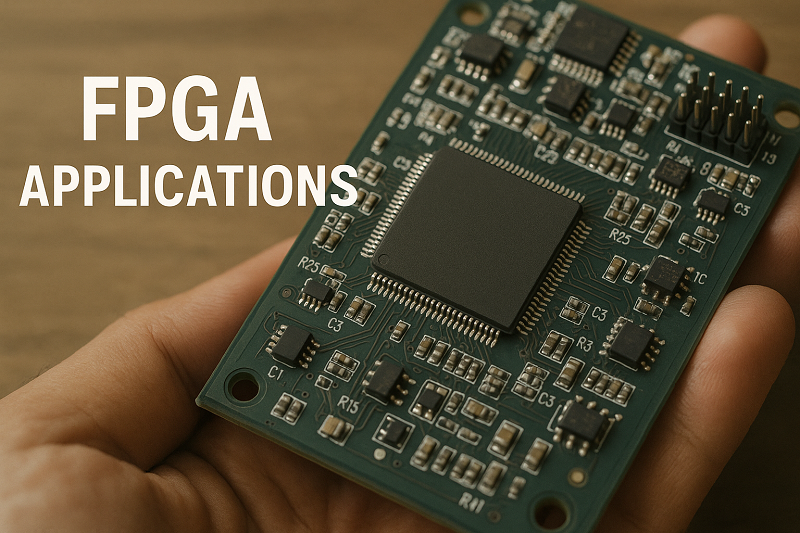 A Comprehensive Guide to FPGA Development BoardsUTMEL11 September 20254139
A Comprehensive Guide to FPGA Development BoardsUTMEL11 September 20254139This comprehensive guide will take you on a journey through the fascinating world of FPGA development boards. We’ll explore what they are, how they differ from microcontrollers, and most importantly, how to choose the perfect board for your needs. Whether you’re a seasoned engineer or a curious hobbyist, prepare to unlock new possibilities in hardware design and accelerate your projects. We’ll cover everything from budget-friendly options to specialized boards for image processing, delve into popular learning paths, and even provide insights into essential software like Vivado. By the end of this article, you’ll have a clear roadmap to navigate the FPGA landscape and make informed decisions for your next groundbreaking endeavor.
Read More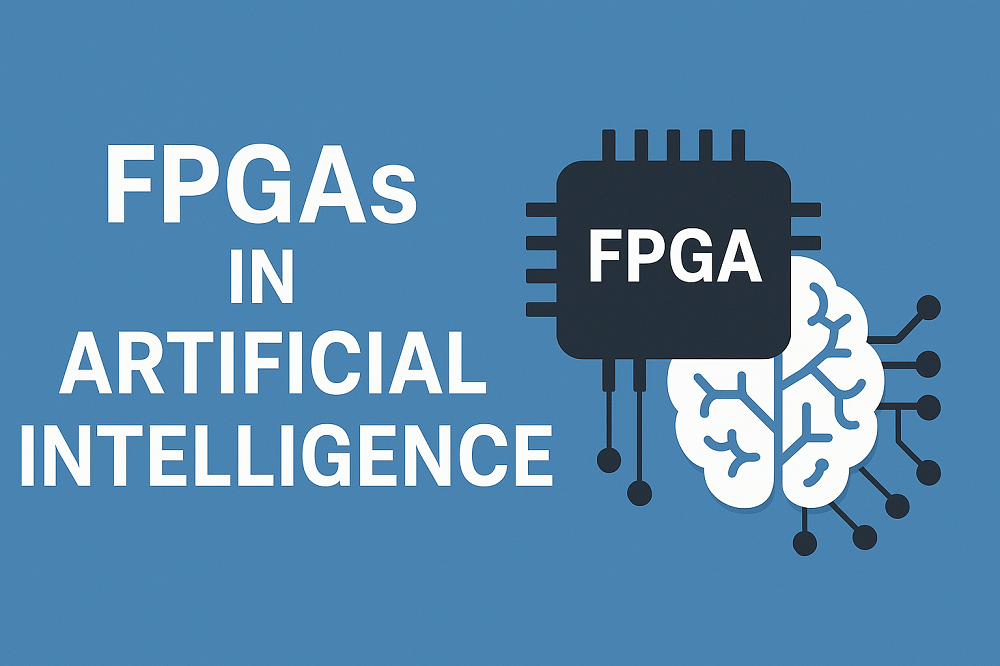 Applications of FPGAs in Artificial Intelligence: A Comprehensive GuideUTMEL29 August 20251465
Applications of FPGAs in Artificial Intelligence: A Comprehensive GuideUTMEL29 August 20251465This comprehensive guide explores FPGAs as powerful AI accelerators that offer distinct advantages over traditional GPUs and CPUs. FPGAs provide reconfigurable hardware that can be customized for specific AI workloads, delivering superior energy efficiency, ultra-low latency, and deterministic performance—particularly valuable for edge AI applications. While GPUs excel at parallel processing for training, FPGAs shine in inference tasks through their adaptability and power optimization. The document covers practical implementation challenges, including development complexity and resource constraints, while highlighting solutions like High-Level Synthesis tools and vendor-specific AI development suites from Intel and AMD/Xilinx. Real-world applications span telecommunications, healthcare, autonomous vehicles, and financial services, demonstrating FPGAs' versatility in mission-critical systems requiring real-time processing and minimal power consumption.
Read More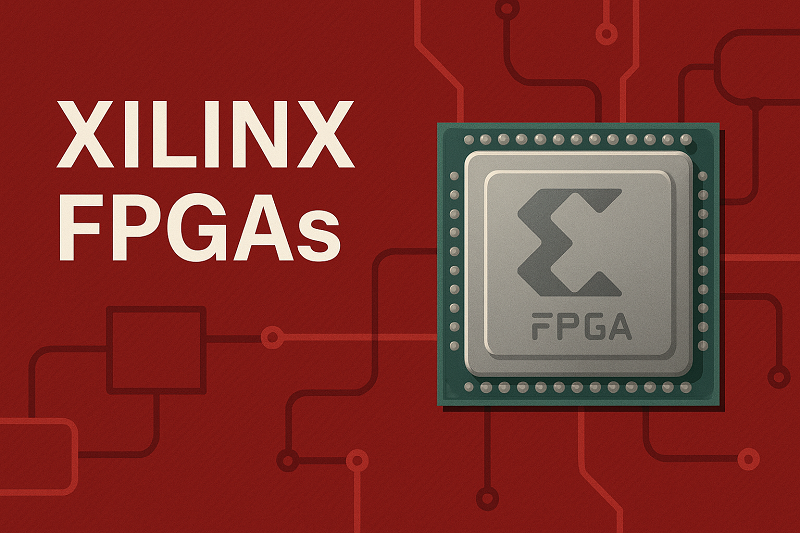 Xilinx FPGAs: From Getting Started to Advanced Application DevelopmentUTMEL09 September 20251836
Xilinx FPGAs: From Getting Started to Advanced Application DevelopmentUTMEL09 September 20251836This guide is your comprehensive roadmap to understanding and mastering the world of Xilinx FPGA technology. From selecting your first board to deploying advanced AI applications, we'll cover everything you need to know to unlock the potential of these remarkable devices. The global FPGA market is on a significant growth trajectory, expected to expand from USD 8.37 billion in 2025 to USD 17.53 billion by 2035. This surge is fueled by the relentless demand for high-performance, adaptable computing in everything from 5G networks and data centers to autonomous vehicles and the Internet of Things (IoT). This guide will walk you through the key concepts, tools, and products in the Xilinx ecosystem, ensuring you're well-equipped to be a part of this technological revolution.
Read More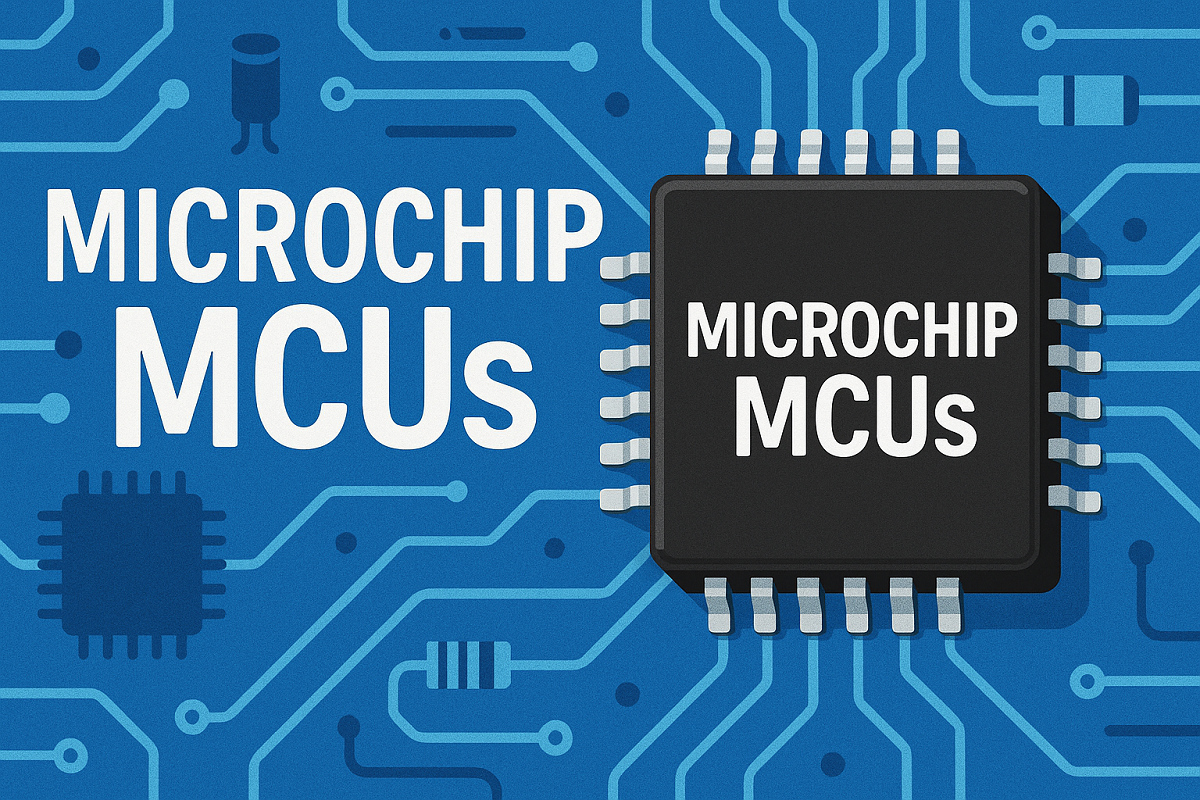 The Ultimate Guide to Microchip MCUs: From Selection to Real-World ApplicationsUTMEL13 September 2025817
The Ultimate Guide to Microchip MCUs: From Selection to Real-World ApplicationsUTMEL13 September 2025817Are you an aspiring electronics enthusiast, a seasoned engineer, or a hobbyist looking to bring your next project to life? If so, you've likely encountered the term Microchip MCU. But what exactly is a Microchip MCU, and how do you choose the right one from their vast portfolio? This comprehensive guide will walk you through everything you need to know about Microchip's powerful microcontrollers, from selection and programming to real-world applications.
Read More
Subscribe to Utmel !
![SI8261ACC-C-IS]() SI8261ACC-C-IS
SI8261ACC-C-ISSilicon Labs
![HCS301T/SN]() HCS301T/SN
HCS301T/SNMicrochip Technology
![ADUM3224WCRZ]() ADUM3224WCRZ
ADUM3224WCRZAnalog Devices Inc.
![SI8233AD-D-IS]() SI8233AD-D-IS
SI8233AD-D-ISSilicon Labs
![ATECC508A-MAHCZ-S]() ATECC508A-MAHCZ-S
ATECC508A-MAHCZ-SMicrochip Technology
![ATECC608A-SSHCZ-B]() ATECC608A-SSHCZ-B
ATECC608A-SSHCZ-BMicrochip Technology
![AT88SC0808CA-MJ]() AT88SC0808CA-MJ
AT88SC0808CA-MJMicrochip Technology
![HCS361-I/P]() HCS361-I/P
HCS361-I/PMicrochip Technology
![ACPL-J313-500E]() ACPL-J313-500E
ACPL-J313-500EBroadcom Limited
![ADUM7234BRZ-RL7]() ADUM7234BRZ-RL7
ADUM7234BRZ-RL7Analog Devices Inc.









